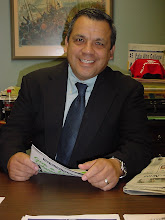Psychedelic: Optical and Visionary Art since the 1960sMarch 13 through August 1, 2010
In 1956, Dr. Humphry Osmond coined the term 'psychedelic' to refer to hallucinatory experiences produced by the use of drugs during psychotherapeutic practices. Soon, Timothy Leary and the counter-culture’s hippie movement in America advocated "turning on, tuning in, and dropping out" as a means of intentionally seeking an intensified, sensory experience.
Additionally, the 1960s saw the advent of color television, fluorescent paints, and the Op Art movement’s experimentation with optical mixing to achieve dazzling color effects; all of which introduced a new visual language of extreme color and kaleidoscopic space into contemporary culture. By the end of the decade, one did not have to consume drugs to encounter a "trip"; the psychedelic aesthetic was experienced with light shows, lava lamps, posters and buttons, record album covers, fashion, and stage design for TV shows such as Rowan and Martin’s Laugh-In, The Ed Sullivan Show, and The Smothers Brothers Comedy Hour.
Although psychedelic culture began to decline by the mid-1970s, one of its legacies is an aesthetic sensibility that has continued to evolve over the years and, more recently, has gained favor in growing numbers among contemporary artists.
San Antonio Museum of Art mounts an exhibit of psychedelic art from the Op Art of the early 1960s to the abstract and visionary works of today. Curator David Rubin takes the lead in what he calls the first-ever look at the development of a “psychedelic sensibility” in contemporary art of the last 40 years.
It should be stressed that this exhibition is about the influence of psychedelic culture on the art world — not necessarily the influence of drugs. Little of the content addresses drug issues; rather, in confronting a variety of issues, the artists exhibited employ a psychedelic aesthetic sensibility — extremes of color and light that did not exist to any extent in culture or in contemporary art prior to the birth of the psychedelic era.
A 140 page, fully illustrated, full-color. hardcover book, co-published with the MIT Press, accompanies Psychedelic: Optical and Visionary Art since the 1960s. In the lead essay, exhibition organizer David S. Rubin, The Brown Foundation Curator of Contemporary Art at the San Antonio Museum of Art, presents a cohesive narrative, tying together the relationships among the artists and analyzing their art in terms of content, culture, and history. Rubin has previously addressed a number of topics in this manner through catalogs for thematic exhibitions he has organized, among them Cruciformed: Images of the Cross since 1980, Old Glory: The American Flag in Contemporary Art, It’s Only Rock and Roll: Rock and Roll Currents in Contemporary Art, and Birdspace: A Post-Audubon Artists Aviary.
Psychedelic: Optical and Visionary Art since the 1960s features artists Albert Alvarez, Richard Anuszkiewicz, Jeremy Blake, Richie Budd, George Cisneros, James Cobb, Jack Goldstein, Alex Grey, Al Held,
Mark Hogensen, Constance Lowe, Erik Parker, Lari Pittman, Ray Rapp, Deborah Remington, Susie Rosmarin, Alex Rubio, Sterling Ruby, Frank Stella, Philip Taaffe, Fred Tomaselli, Victor Vasarely, Michael Velliquette, and Robert Williams.


